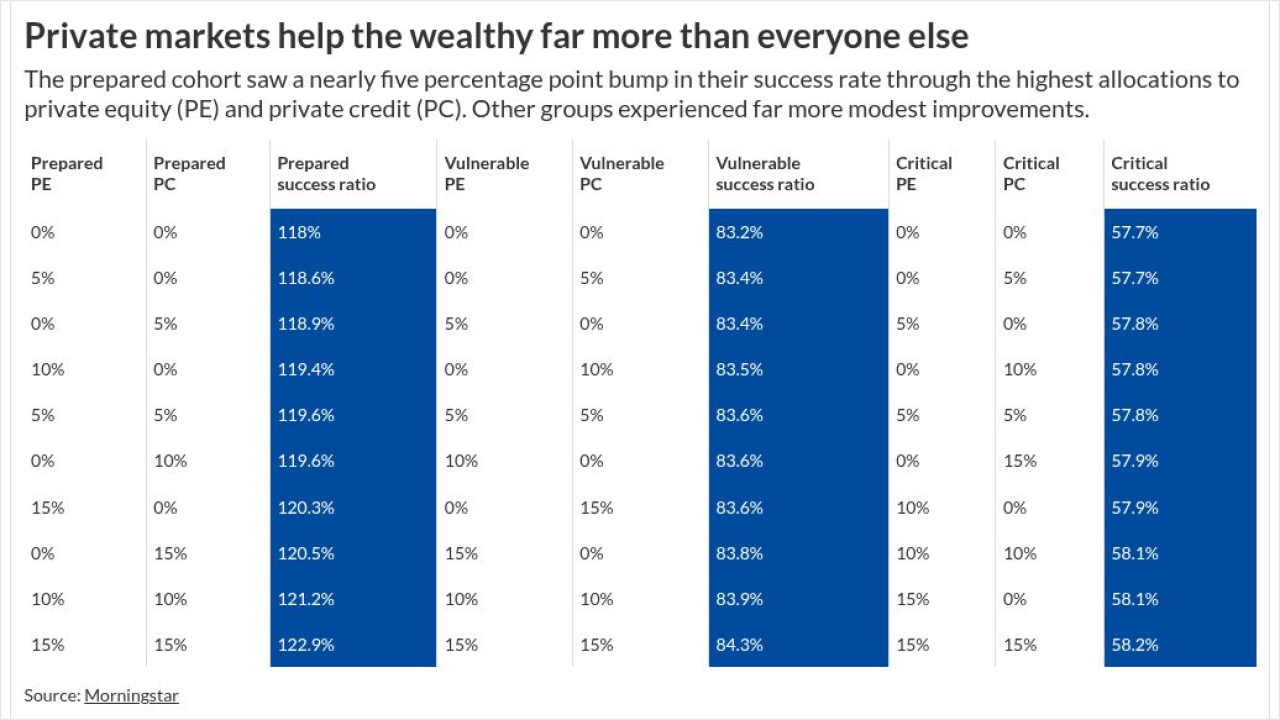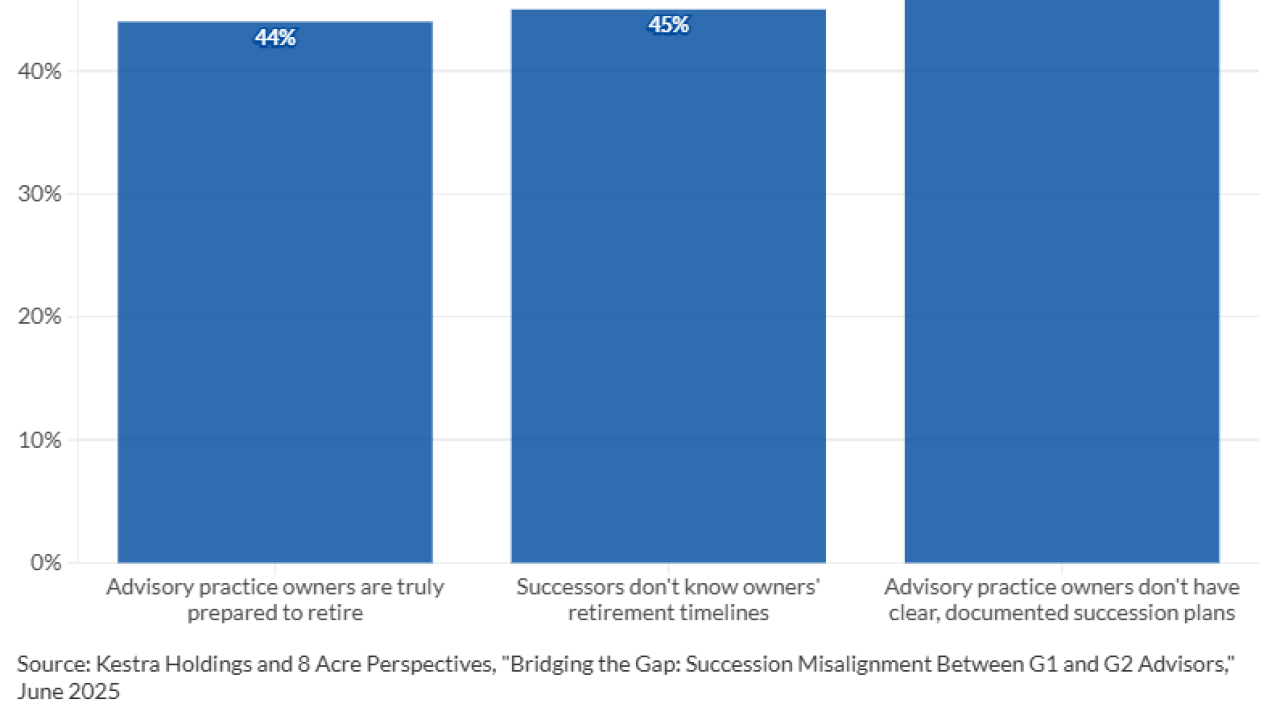At a recent NAPFA conference, I asked everyone in the audience to raise their hands if they were charging their clients based on assets under management. Virtually every hand went up.
Then I asked how many of them were considering a switch to retainers or other fixed compensation at some point in the next couple of years. Once again, virtually every hand went up.
Does that look like a trend to you?
Over the past year, in my newsletter and elsewhere, I’ve tried to answer a lot of nontrivial questions about shifting fees. For instance: If you stop basing your compensation on AUM, how would you do the potentially complicated work of setting appropriate fees for each individual client? How would you get every advisor in your office on the same page and charge appropriately for each client? How would you explain the new fee structure to prospects and clients? AUM contains a built-in escalator clause which grows your compensation as clients add more assets to their portfolios and the markets rise. How would you raise your fees if you switched to a different model? Would a retainer model cause you to experience higher client turnover?
These questions often get phrased in the form of objections. And with all of them, I think it’s important to consider some of the reasons why so many advisors are now, for the first time, planning to make this complicated transition.
I’m going to list them from least to most urgent.
1. WHERE’S YOUR VALUE?
Getting paid based on assets leads people to misunderstand where the great majority of your value lies.
Advisors now are like the savings and loan associations back in the last century. Whenever you opened up a checking account at an S&L, they would give you, as a bonus, a nice toaster. Today, clients sign up to let an advisor manage their assets, and the advisor gives them, as a bonus, full-service financial planning analysis and recommendations.
The problem with this arrangement was wonderfully illustrated by an advisor who recently told me what happened when he explained his AUM fee structure to a wealthy prospect. The prospect listened carefully, and then said, “Now let me get this straight: If I let you manage my $6 million portfolio, you’ll charge a percentage of the assets and also provide financial planning services?”
The advisor, pleased at his client’s ready grasp of the concept, answered: “Yes, that’s right.”
Then the prospect asked: “What if I give you just $5 million? Would you still give me financial planning advice?”
The advisor, less pleased, again answered in the affirmative.
“Suppose I give you just $1 million?” the prospect persisted.
“At that point in the conversation,” the advisor told me later, “I began sweating. Nobody had ever asked me that before.”
2. BLATANT INEQUALITY
There are also some blatant inequalities built into the AUM model.
As an exercise, try tracking your time and internal expenses for each client — taking into account your hourly rate, the hourly rate of your staff, the cost of your support staff and your office expenses amortized over the client base.
Many advisory firms, when they run the numbers, are shocked to discover that 80% of their clients are unprofitable: Their total fees come to less than the internal costs of serving these clients.
At the other end of the spectrum, a few wealthy-but-undemanding clients are subsidizing the services provided to the rest.
Is that fair? Is that a good business practice for a service firm? Shouldn’t every client be at least marginally profitable?
3. CONFLICTS OF INTEREST
Charging based on assets introduces extra conflicts of interest.
Roy Diliberto, of RTD Financial Advisors in Philadelphia, offers a thought experiment to clients to help them understand why he only charges retainer fees. Suppose they want him to evaluate a $500,000 investment opportunity. He can either say yes, go for it, or no, it’s not a good opportunity — right?
If he says no, and he’s paid based on assets under management, wouldn’t a client wonder if he was simply protecting $5,000 a year in revenue? And if he says yes, it just cost him $5,000 in revenue to give good advice.
Does that make any sense? Is that a position you want to be in?
4. REVENUE MISMATCH
The AUM model creates a dangerous countercyclical mismatch between revenues and workload at your firm. In most other businesses, if you run into a downturn, your firm will consequently have less business to do. You weather the storm by laying off workers or cutting capacity.
But just try that if you’re a financial planner. When the markets drop, your phone rings. The harder and faster the plunge, the more needy your clients become — and, at the same time, if you’re paid a percentage of assets, the fewer revenues you have to work with.
Right when your revenues are going down, your internal costs are going through the roof. Who else, in our economic landscape, faces such a dangerous mismatch? Shouldn’t you be insulated from that?
5. CLIENT BASE CHALLENGE
The AUM model makes it difficult to work with a huge blue ocean of potential clients, many of them younger, who have plenty of income and are well able to pay your advisory fees. But since they don’t have $500,000 to manage (or $1 million, or whatever your minimum is), you can’t fit them into your revenue model. You have to turn them away.
If you were, instead, compensated by retainers, those would be potentially great clients — and there are virtually limitless numbers of them who could pay a quarterly retainer or hourly fee to get the same advice you would give to wealthy prospects.
6. YOUR ‘GREED’ PROBLEM
The reason with the most urgency is that the online advice platforms (the robo advisors) are telling the world that they charge 15 to 25 basis points to manage assets, while greedy advisors like you charge 100.
You know the fallacy in this claim: Only about 15 to 25 basis points worth of your value (if that) can be attributed to your asset management work. The rest of your AUM fees pay for financial planning services — aka the toaster.
But until your compensation model reflects this division of value, your clients and prospects are going to find the robo argument stubbornly persuasive. They’re going to think that your value, like the online platforms, is in your AUM work. And who can blame them? This argument may not have much effect on your current clients, but how many prospects will look at your fee structure and assume you’re nothing but a greed-head?
These arguments may not be enough to convince you to make a complicated shift from a proven revenue model that you believe is working just fine. But I can tell you — from hallway conversations at industry meetings, and the occasional (and startling) show of hands — that many of your peers are tired of giving away something far more valuable than a toaster just so clients will sign up for an asset management service that’s pretty easy to get anywhere.
These advisors are starting to think there are some pretty good reasons to switch. As soon as the profession realizes that the “how” is not nearly as complicated as it appears from the outside, the “why” is going to win, and the AUM revenue model will be toast.
Bob Veres, a Financial Planning columnist in San Diego, is publisher of Inside Information, an information service for financial advisors. Follow him on Twitter at
Read more:





